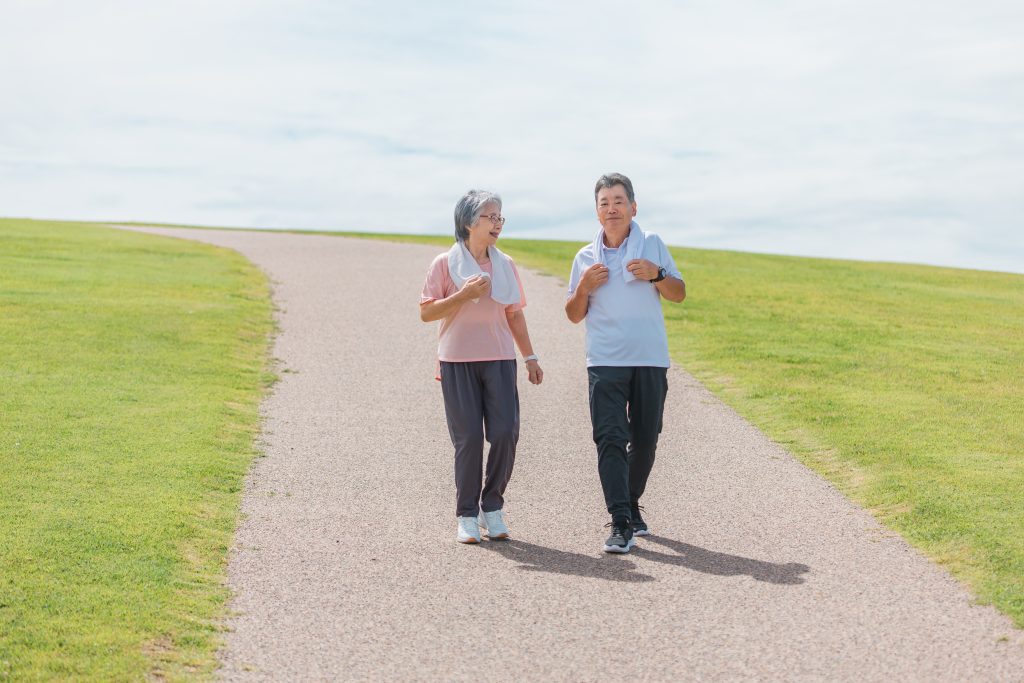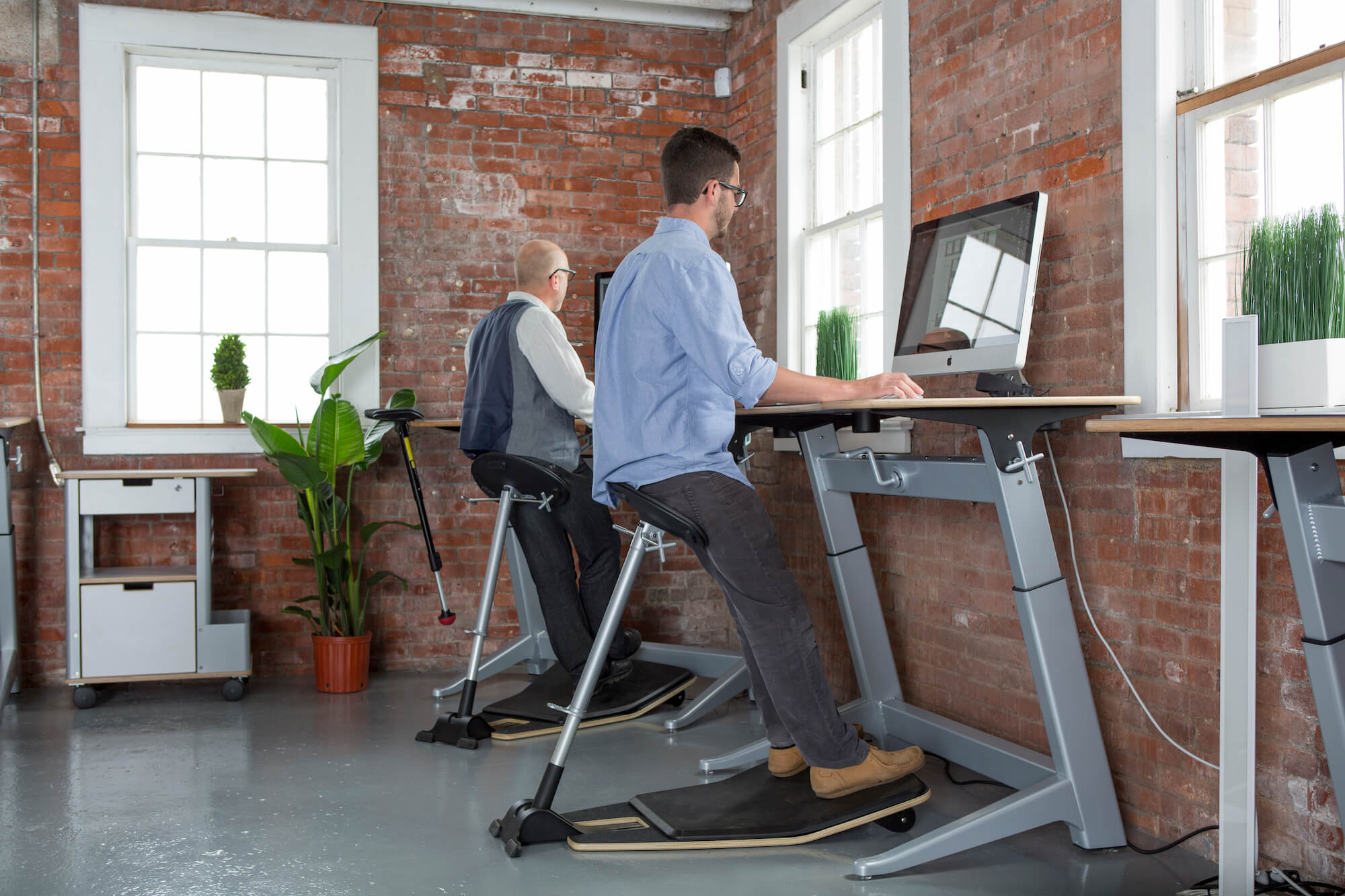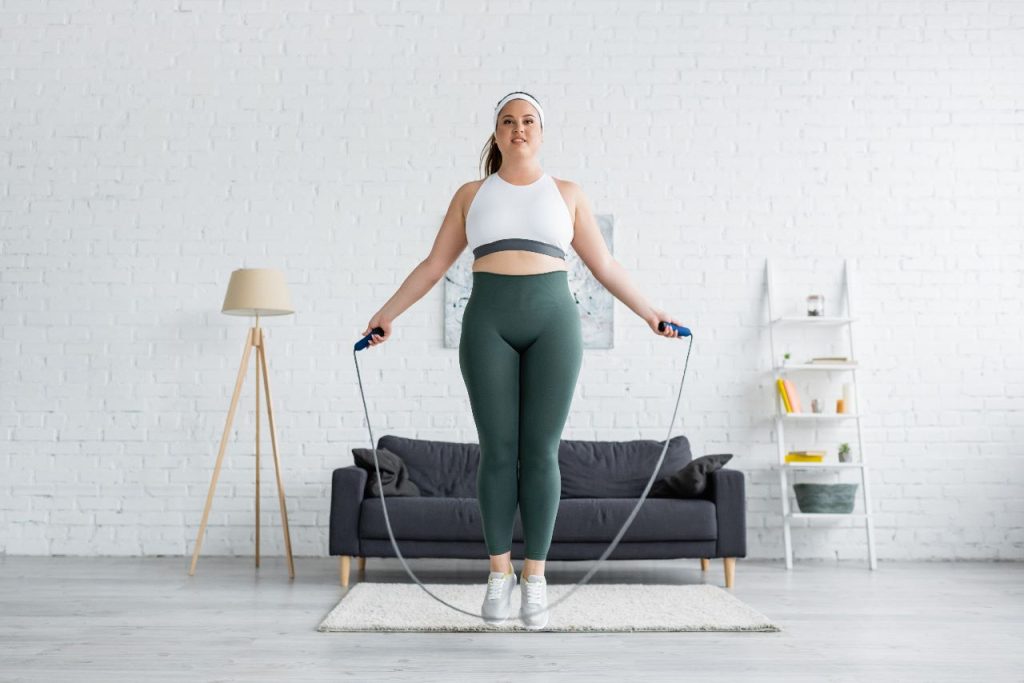By Yasmine S. Ali, MD, MSCI
Modern advances make our lives easier, but they’ve led many of us to adopt a more sedentary lifestyle. Moving less and sitting more is linked to several health conditions and is believed to be a significant cause of the obesity epidemic.
Sitting for longer than four hours per day significantly increases your risk for cardiovascular disease (perhaps even more than smoking), diabetes, and several other obesity-related conditions.1

Fixing a sedentary lifestyle takes some conscious effort at first, but the value of being more physically active is worth it for its myriad benefits.
Whether you’re stuck at a desk all day or just struggling to get motivated and exercise, here are ideas to help you get moving.
What Counts as a Sedentary Lifestyle?
While there is no strict definition of what constitutes a sedentary lifestyle, researchers have a few different metrics to measure what a sedentary lifestyle is. One measure is the time an individual spends seated or reclining during waking hours. Spending four to six waking hours sitting or lying down is considered sedentary.2
It would seem reasonable to assume that those meeting the requirements for physical activity would not be considered sedentary. However, research suggests that even those who do the amount of physical activity recommended by the World Health Organization (at least 150 minutes of moderate activity during the week or 75 minutes of intense activity per week) can still be considered sedentary if they spend four to six hours sitting or reclining per day.
How Harmful Is It?
In the short term, being inactive can increase depression or anxiety. It can also affect the way the body processes fats and sugars in the diet and lead to some weight gain if you aren’t burning enough calories.3
Over the long term, sedentary lifestyles increase the risk of mortality from cardiovascular disease, diabetes, and cancer.1 In addition to increasing the chances of dying of these causes, it also decreases the quality of life through increased knee pain, higher rates of depression, and decreased cognitive function.1
Fixing a Sedentary Lifestyle
If you suspect you are living a sedentary lifestyle, the good news is there are myriad ways to add activity into your day and reverse your sedentary tendencies. Here are some suggestions.
Walk More

Plenty of research has borne out the health benefits of a daily 30-minute walk.
Walking has a positive impact on mental health, a reduction in the incidence of cardiovascular disease and stroke, and a positive impact on blood pressure.4
It’s easy to start walking more, even at the office. Suggest walking meetings instead of sitting around a conference table. You can also try adding activities before or after work, such as walking your dog for longer stretches.
Look for other opportunities to take a walk. For example, if you live nearby, walk your kids to or from school, or at least as far as the bus stop. You can also walk after dinner and make it a family event.
Even if your family’s schedule doesn’t permit sharing dinner together, try taking a stroll through the neighborhood when everyone gets home. Not only will you all get moving, but you’ll get to spend quality time together.
Take the Stairs

A study published in 2017 found stair climbing, considered a vigorous-intensity physical activity, burns more calories per minute than jogging.
Taking the stairs whenever possible can help you maintain a healthy weight as well as build and maintain strong bones, joints, and muscles.5
Walk the Parking Lot
As long as you can do so safely, parking your car at the far end of the parking lot or down the street from your destination is an easy way to add extra steps to your day.
In the same vein as taking the stairs instead of the elevator if you’re able, if you have the time and can walk a little farther, you’ll get the benefits of additional activity.
Plus, walking across the parking lot or around the block from your office also gives you a moment outside to soak up the sun or enjoy the change of seasons, which can also be great for your mental health.
Ditch Your Car

The way we travel in the modern age is associated with rates of overweight and obesity. Compared to more passive ways of getting around, the active modes, such as walking or cycling, have many health benefits and greater potential to prevent obesity.
Even public transit appears associated with lower body mass index (BMI) compared to driving your own car to work. Standing on a subway platform or walking to a bus stop requires more steps than just going from your front door to your garage, in addition to more time standing and balancing.6
BMI is a dated, flawed measure. It does not take into account factors such as body composition, ethnicity, sex, race, and age.
Even though it is a biased measure, BMI is still widely used in the medical community because it’s an inexpensive and quick way to analyze a person’s potential health status and outcomes.
However, if you live in a city where you have to park in a city lot or several blocks away from where you live, you may be able to get in those added steps even if you do take your car.
Stand Up at Work
If your job requires you to sit for long periods, make it a point to stand up at least every 20 minutes. You may need to set a reminder using your calendar or phone, especially if you’re used to getting involved with a project and losing track of time.
If you’re worried about interrupting your workflow, you don’t necessarily have to stop your task to take a quick standing or stretching break. You can easily take calls or review files standing up.
Try taking brief breaks away from your desk to get some water or confer with a colleague at their desk rather than sending an email.
Change Your Workstation

You might also consider getting a standing desk, a treadmill desk, or a fitness ball seat (which promotes “active sitting,” where you engage your core).
If you have a workstation that can be adjusted to various heights, you can do some of your daily computer work standing up.
Standing workstations may even improve your posture, reduce back pain, and when arranged properly, can be a better ergonomic fit. Some companies employ workspace-ergonomics specialists who can evaluate your workstation and help you get set up.
Do Your Chores
Instead of moving from table to couch, clean your kitchen after dinner. Tasks like doing the dishes and wiping down countertops count as standing activities in your day.
Other chores like taking out the garbage, sweeping the floors, and vacuuming are even more physically active.
A bonus is that you’ll get housework done during the week, which frees up your days off for more fun activities.
Be Active After Dinner

Planning activity after dinner not only boosts your fitness, it helps keep your blood sugar levels in the optimal range and reduces your risk of developing insulin resistance.
Even if you’re eating out and won’t have to do the cleaning up, you don’t have to miss out on a chance to get moving. Suggest continuing the mealtime conversation with dinner companions by taking a short walk.
Use Commercial Breaks
Watching your favorite television show or having a movie night at home with your family doesn’t have to be a prolonged sedentary activity.
You can use commercial breaks as a chance to move around. Need to refill the popcorn bowl? Pause the movie and give everyone a chance to stretch while you replenish snacks.
You can even make a game of it. See who can do the most pushups or situps during a commercial break. Or, if you still have chores to take care of, multitask. Folding laundry is one physical activity you can easily do while watching a movie.
Intentionally breaking up any screen time, whether television, computer, tablet, or phone, will help reduce the time you spend sedentary each day.
Develop a Fitness Routine

If the thought of going for a run intimidates you, you don’t have to run a marathon to enjoy the benefits of fitness.
There are many options for exercise. Experiment and find which you prefer. You might like running outdoors on trails or through your neighborhood best. Maybe the cardio machines at a gym or community center are a better fit. Swimming, high-intensity interval training, and cycling are all excellent options to break free of a sedentary lifestyle.
Exercising can also be a social event if you want it to be. If you don’t prefer to exercise solo, you can join a fitness group.
Plant a Garden

Any gardener will tell you how much physical effort is involved in every gardening activity. Gardening is mentally and spiritually stimulating, but many people find it an enjoyable way to stay active.
The American Heart Association considers general gardening to be in the category of moderate-intensity physical activity.
You can get started with a garden in your own backyard if you have space, but if not, there are other ways to get your hands dirty.
If you don’t have a yard of your own, volunteer to help out at a local community garden. Many cities, school districts, and nature centers rely on green-thumbed volunteers for planting and maintenance.
Try a Fitness Tracker
A pedometer is a great way to track your steps, which can help you gauge your activity throughout the day.
Knowing your activity can alert you to patterns or habits that lean toward an overly sedentary lifestyle. You can take action to combat the effects of sitting too much by finding opportunities to move more.
Sophisticated fitness trackers do more than tell you how many steps you’re taking—you can use them to track calories in and calories out, your day-to-day activity level, and set goals. Some even track your heart rate and sleep.
Many smartphone apps provide similar functions even if a wearable fitness tracker isn’t your preference or within your budget. Many options are free and may track your activity passively, so you won’t have to remember to log your activity.
Summary
It is well-documented that a sedentary lifestyle leads to poor health outcomes. The great news is that even small changes to the amount of activity a person gets can lead to more significant changes in overall health. Simply walking more, parking farther away, or doing household chores positively impacts health. Adding a fitness routine to your lifestyle, whether cardio, swimming, or resistance training, can lead to significant health improvements.
By Yasmine S. Ali, MD, MSCI
Yasmine Ali, MD, is board-certified in cardiology. She is an assistant clinical professor of medicine at Vanderbilt University School of Medicine and an award-winning physician writer.
Video: “EXERCISES FOR OVERWEIGHT | OBESE PEOPLE”
EXERCISES FOR OVERWEIGHT | OBESE PEOPLE. SET NO. 1: GENERAL EXERCISES TO STRENGTHEN MUSCLES AND IMPROVE JOINT MOBILITY
For additional information about Rehabilitation of the patients with Obesity you can watch a video demonstrating exercises and rehabilitation recommendations.

CHECK OUT THE DEMO VERSION OF OUR WORKOUTS FOR REHABILITATION OF PATIENTS with obesity ON YOUTUBE
Our website presents sets of exercises for the rehabilitation of the patients with obesity in the following areas:
-
EXERCISES FOR OVERWEIGHT/OBESE PEOPLE. SET NO. 1: GENERAL EXERCISES TO STRENGTHEN MUSCLES AND IMPROVE JOINT MOBILITY
-
EXERCISES FOR OVERWEIGHT/OBESE PEOPLE. SET NO. 2: POWER EXERCISES WITH A GYMNASTIC ELASTIC BAND/TERABAND
-
EXERCISES FOR OVERWEIGHT/OBESE PEOPLE. SET NO. 3: POWER EXERCISES WITH DUMBBELLS. WEIGHT IS SELECTED INDIVIDUALLY. IT IS RECOMMENDED TO START WITH 1-2 KG
-
EXERCISES FOR OVERWEIGHT/OBESE PEOPLE. HYDROTHERAPY MODULE: SWIMMING AND HYDROTHERAPY, EXERCISES IN THE WATER
Sources
Verywell Health uses only high-quality sources, including peer-reviewed studies, to support the facts within our articles. Read our editorial process to learn more about how we fact-check and keep our content accurate, reliable, and trustworthy.
- Park JH, Moon JH, Kim HJ, Kong MH, Oh YH. Sedentary lifestyle: overview of updated evidence of potential health risks. Korean J Fam Med. 2020;41(6):365-373. doi:10.4082/kjfm.20.0165
- Magnon V, Dutheil F, Auxiette C. Sedentariness: a need for a definition. Front Public Health. 2018;6:372. doi:10.3389/fpubh.2018.00372
- MedlinePlus. Health risks of an inactive lifestyle.
- An N, Chuo J. Walking and activeness: the first step toward the prevention of strokes and mental illness. Comput Intell Neurosci. 2022;2022:3440437. doi:10.1155/2022/3440437
- Allison MK, Baglole JH, Martin BJ, Macinnis MJ, Gurd BJ, Gibala MJ. Brief Intense Stair Climbing Improves Cardiorespiratory Fitness. Med Sci Sports Exerc. 2017;49(2):298-307. doi:10.1249/MSS.0000000000001188
- Parise I, Abbott P, Trankle S. Drivers to obesity—a study of the association between time spent commuting daily and obesity in the Nepean blue mountains area. Int J Environ Res Public Health. 2021;19(1):410. doi:10.3390/ijerph19010410




